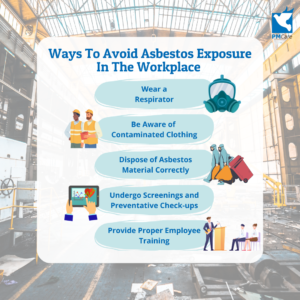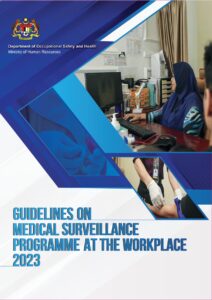MESOTHELIOMA AWARENESS DAY
By Dr Helmi Ismail, Medical Advisor of PMCare
Two decades ago, the Mesothelioma Applied Research Foundation established Mesothelioma Awareness Day which takes place annually on September 26. Launched in 2004 by community members, this day has been the driving force behind the movement to bring more awareness and funding to this cancer. Let’s examine why.
Understanding Mesothelioma
Mesothelioma is a rare but highly aggressive form of cancer that originates in the mesothelial cells, a thin layer of specialized cells that form the lining of internal organs. It is called “Mesothelioma” because it affects mesothelial cells – one-cell thick layer – lining of the chest wall and lungs on i.e. both the parietal and visceral surfaces, respectively.

The occurrence of mesothelioma varies across the globe due to differences in asbestos use and exposure. In countries like Australia and Great Britain, where asbestos was extensively used in industries and construction throughout the 20th century, mesothelioma incidence is notably high, affecting approximately 30 people per million each year (Elliott, & Jones, 2020) while the United States reports between 2,000 and 3,000 new cases annually (Kim et al., 2019). Globally, it is estimated that 28,000 to 43,000 people die from malignant pleural mesothelioma every year (Kim et al., 2019). These countries are experiencing the long-term health effects of past widespread asbestos use, even though they have since banned the material.

The impact of mesothelioma extends beyond the individual patient, as the disease can have significant emotional and financial implications for families and communities. The high cost of medical care, loss of income, and the emotional toll of a terminal diagnosis can be devastating. Additionally, the legal and regulatory landscape surrounding asbestos exposure and mesothelioma has been complex and contentious, with ongoing debates about liability, compensation, and the role of government in addressing this public health crisis.
Asbestos: The Cause and Occupational Risks
This type of cancer is almost exclusively caused by exposure to asbestos, a naturally occurring mineral that was once widely used in various industrial and construction applications for its heat-resistant and insulating properties.
Asbestos is the name given to a group of naturally occurring minerals that are resistant to heat and corrosion. Asbestos has been used in products, such as insulation for pipes (steam lines for example), floor tiles, building materials, and in vehicle brakes and clutches. Asbestos also includes the mineral fibres chrysotile, amosite, crocidolite, tremolite, anthophyllite, actinolite and any of these materials that have been chemically treated or altered. In other words, they are almost everywhere!
Heavy exposure to asbestos tends to occur in the construction industry and ship repair, particularly during the removal of asbestos materials for renovation, repairs, or demolition. Workers are also at risk during the manufacturing of asbestos products, such as textiles, friction materials, insulation, and various building supplies, as well as during automotive brake and clutch repairs.
Symptoms and Diagnosis
Symptoms of mesothelioma are often vague and non-specific, including chest pain, shortness of breath, fatigue, weight loss, and persistent coughing. Unfortunately, by the time these symptoms become apparent, the disease is usually in an advanced stage, which significantly limits treatment options and contributes to a poor prognosis. On average, life expectancy for those diagnosed with mesothelioma ranges from 12 to 21 months, depending on the stage and type of the cancer.

Pleural mesothelioma, the most common form, typically develops 20 to 50 years after asbestos exposure. This long latency period makes the disease especially dangerous, as it can remain undetected for decades, hindering early diagnosis and effective intervention.
Imaging studies such as X-rays or CT scans may help in the diagnosis, but the disease is usually confirmed by a tissue biopsy.
Once a diagnosis is made, patients may undergo a variety of treatment approaches, including surgery, radiation therapy, and chemotherapy, although the effectiveness of these interventions is often limited.
Prevention
Prevention plays a pivotal role in reducing the incidence of mesothelioma, especially since asbestos exposure is the primary cause of this aggressive cancer. While treatments for mesothelioma continue to improve, the most effective strategy remains preventing exposure to asbestos in the first place.

Preventing Asbestos Exposure for Industrial Workers
- Wear a Respirator and Protective Outfit
Industrial workers must always wear proper personal protective equipment (PPE), including a respirator that meets regulatory standards for asbestos work. This helps prevent inhalation of harmful asbestos fibers. Additionally, full-body protective outfits, such as coveralls and gloves, should be worn to prevent fibers from attaching to the skin and clothes. - Be Aware of Contaminated Clothing
Workers should avoid bringing asbestos-contaminated clothing home. Contaminated clothes can expose family members to asbestos. Designated changing areas should be provided, and all protective clothing should be left at the worksite for proper cleaning or disposal. - Dispose of Asbestos Materials Correctly
Proper disposal of asbestos-containing materials is crucial to minimize exposure risks. Workers should follow all legal and environmental guidelines for asbestos waste disposal, using labeled, sealed containers to transport and dispose of materials at approved facilities. - Undergo Screening and Preventive Checkups
Regular health screenings and medical checkups are essential for workers exposed to asbestos. Early detection of asbestos-related illnesses, such as mesothelioma, can lead to better treatment outcomes. Employers should arrange preventive medical examinations for employees to monitor their health. - Provide Proper Employee Training
Employers must ensure that all workers handling asbestos receive proper training on safe handling, potential hazards, and emergency procedures. Regular training refreshers will help workers stay informed and vigilant about reducing exposure risks.
OSHA (Occupational Safety and Health Act) in particular sets workplace standards to reduce asbestos exposure risks, requiring employers to monitor asbestos levels, provide protective equipment, and ensure proper training for workers.
Occupational Safety and Health Act (OSHA) and Medical Surveillance
In Malaysia, the Department of Occupational Safety and Health (DOSH) is responsible for ensuring workplace safety through the enforcement of regulations, including those concerning asbestos exposure. The Department of Occupational Safety and Health (DOSH) is entrusted with supervising and enforcing programs designed to protect workers from hazardous materials, with asbestos being one of the key focus areas and one of the tools is Medical Surveillance.

Take comfort that in SCHEDULE II [Subregulation 27(3)], there is a listing of chemicals for which medical surveillance is appropriate and Asbestos is listed among other health hazards at the workplace. The Guidelines on Medical Surveillance also give significant prominence to Asbestos outlining the Dos and Don’ts of when asbestos is recognized as a workplace health hazard or when prolonged exposure to it is suspected.
Future Outlook
Despite the grim prognosis for mesothelioma patients, there is hope on the horizon. Researchers are continuously working to develop new and more effective treatments, including targeted therapies and immunotherapies, which hold the promise of improving outcomes for those affected by this devastating disease. Additionally, increased awareness and education about the dangers of asbestos exposure, as well as continued efforts to ban the use of this hazardous material, are essential in preventing future cases of mesothelioma.
In conclusion, mesothelioma is a rare and deadly form of cancer that is almost exclusively caused by exposure to asbestos. While the prognosis for those diagnosed with this disease is often poor, ongoing research and advances in medical treatment, as well as efforts to address the underlying causes of mesothelioma, offer hope for a brighter future for those affected by this devastating illness.
References:
Elliott, D. R. F., & Jones, K. D. (2020). Diagnosis of Mesothelioma. Surgical pathology clinics, 13(1), 73–89. https://doi.org/10.1016/j.path.2019.10.001
Kim, R. Y., Sterman, D. H., & Haas, A. R. (2019). Malignant Mesothelioma: Has Anything Changed? Seminars in respiratory and critical care medicine, 40(3), 347–360. https://doi.org/10.1055/s-0039-1693406

